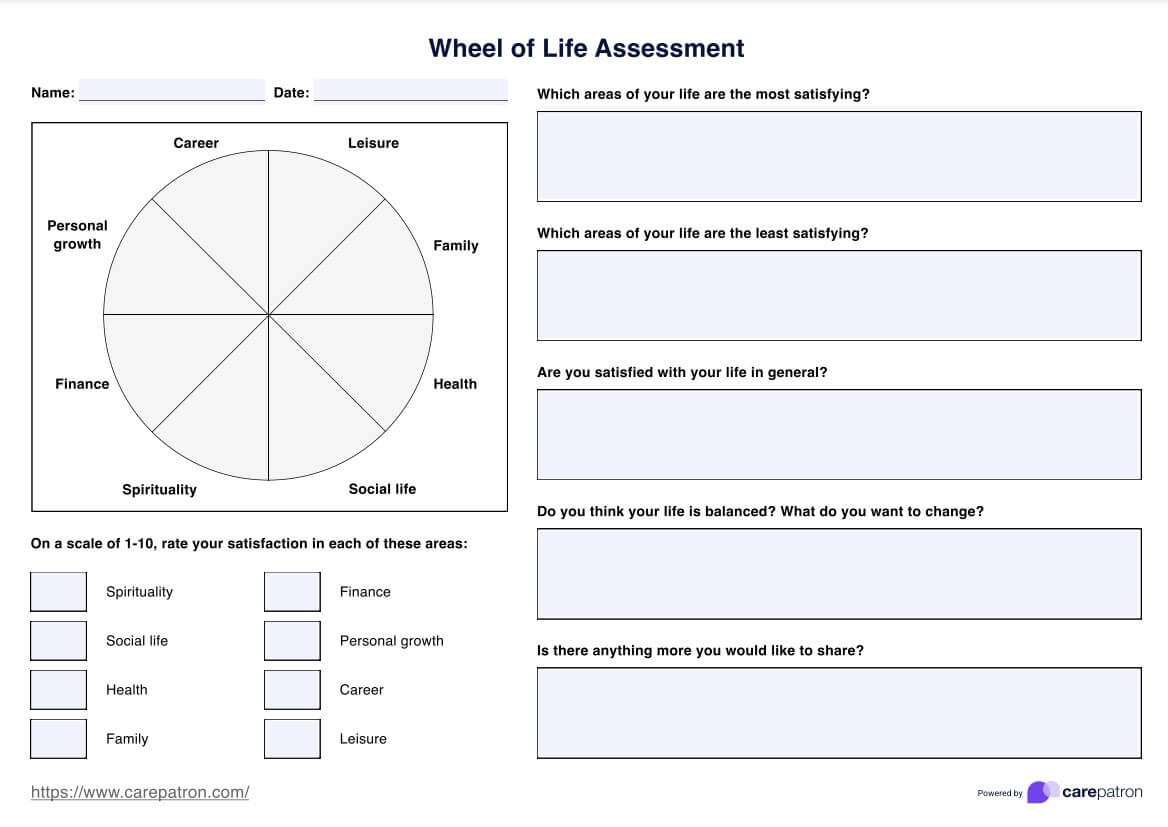The wheel of life concept is a tool used in life coaching and personal development to help individuals assess their level of satisfaction and balance across different areas of their lives. It typically provides helicopter view categories such as career, finances, health, relationships, personal growth, and leisure.

Wheel Of Life
Give your client our free Wheel of Life Assessment worksheet to help them assess their current level of life satisfaction.
Wheel Of Life Template
Commonly asked questions
To score the Wheel of Life Assessment, individuals rate their level of satisfaction in each category on a scale of 1 to 10, with 10 being the most satisfied. The scores are then plotted on a circular diagram on a life wheel worksheet, visually representing the individual's life balance. Areas with lower scores indicate opportunities for improvement or focus.
To facilitate the Wheel of Life Assessment, coaches or facilitators guide individuals through rating their satisfaction in each category. They may provide a list of questions or prompts to help individuals reflect on their current situation and identify areas that need attention. The facilitator then helps the individual interpret the results and any challenge they might encounter and develop action plans to achieve overall life balance and satisfaction.
EHR and practice management software
Get started for free
*No credit card required
Free
$0/usd
Unlimited clients
Telehealth
1GB of storage
Client portal text
Automated billing and online payments











